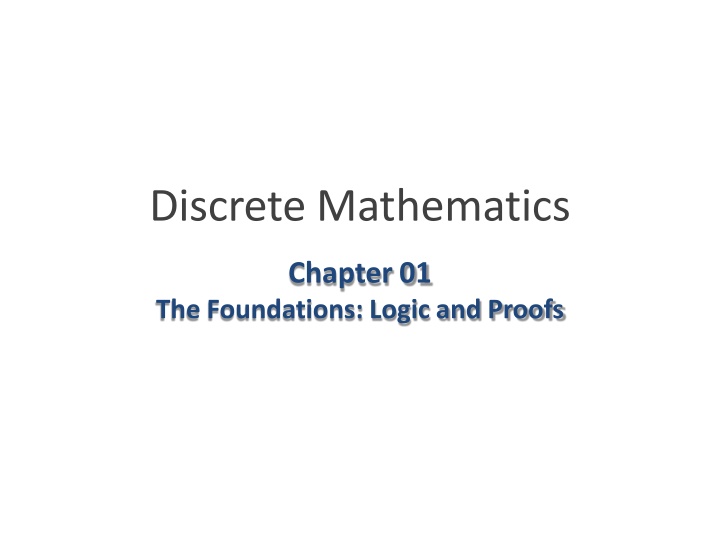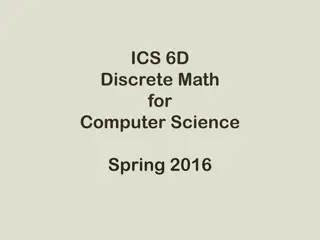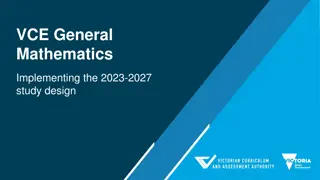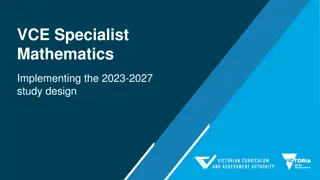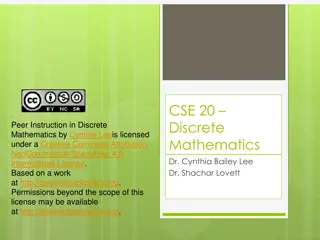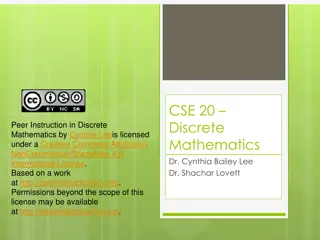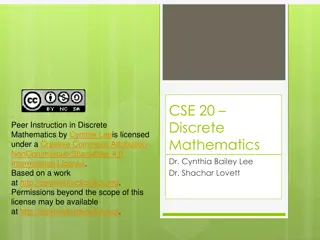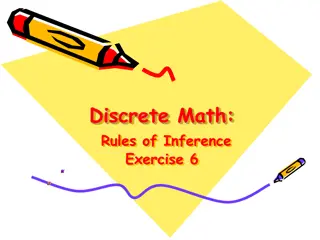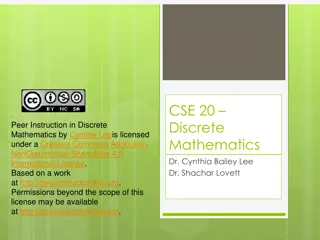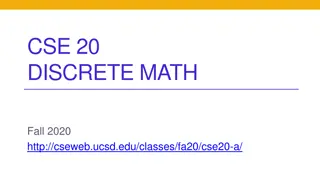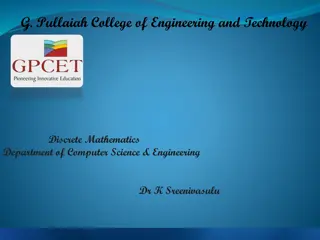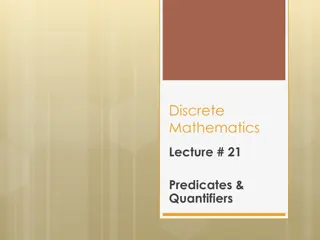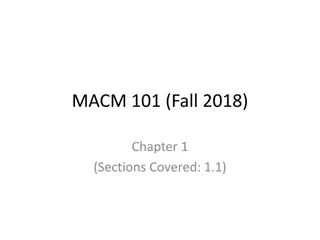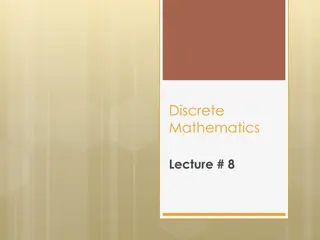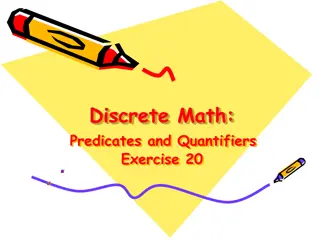Discrete Mathematics
Explore the foundations of logic and proofs in discrete mathematics, focusing on compound propositions, bit operations, and applications of propositional logic. Learn about how computers use bits for information representation and manipulation, and delve into translating English sentences into logical expressions. Discover the bitwise operations of OR, AND, and XOR on bit strings, along with real-world examples showcasing the applications of propositional logic.
Download Presentation

Please find below an Image/Link to download the presentation.
The content on the website is provided AS IS for your information and personal use only. It may not be sold, licensed, or shared on other websites without obtaining consent from the author.If you encounter any issues during the download, it is possible that the publisher has removed the file from their server.
You are allowed to download the files provided on this website for personal or commercial use, subject to the condition that they are used lawfully. All files are the property of their respective owners.
The content on the website is provided AS IS for your information and personal use only. It may not be sold, licensed, or shared on other websites without obtaining consent from the author.
E N D
Presentation Transcript
Discrete Mathematics Chapter 01 The Foundations:Logic and Proofs
Compound Propositions Logic and Bit Operations Computers represent information using bits. A bit is a symbol with two possible values, namely, 0 (zero) and 1 (one). 3
Compound Propositions (2) Computer Bit Operations We will also use the notation OR, AND, and XOR for the operators , ?, and , as is done in various programming languages. 4
Compound Propositions (3) Bit Strings Information is often represented using bit strings, which are lists of zeros and ones. When this is done, operations on the bit strings can be used to manipulate this information. 5
Compound Propositions (4) Example Find the bitwise OR, bitwiseAND, and bitwise XOR of the bit strings 01 1011 0110 and 11 0001 1101 6
Applications of Propositional Logic (1/13) 1- Translating English Sentences. 2- System Specifications. 3 Boolean Searches. 4 Logic Puzzles. 5 Logic Circuits. 7
Applications of Propositional Logic (2/13) Translating English Sentences There are many reasons to translate English sentences into expressions involving propositional variables and logical connectives. In particular, English (and every other human language) is often ambiguous. Translating sentences into compound statements (and other types of logical expressions, which we will introduce later in this chapter) removes the ambiguity. 8
Applications of PropositionalLogic (3/13) Example 1 You can access the Internet from campus only if you are a computer science major or you are not a student. 9
Applications of PropositionalLogic (4/13) Example 1 You can access the Internet from campus only if you are a computer science major or you are not a student. Let ?,? and ? be the propositions: ?: You can access the Internet from campus. ?: You are a computer science major. ?: You are a student. 10
Applications of PropositionalLogic (4/13) Example 1 (You can access the Internet from campus) only if (you are a computer science major or you are not a student). Let ?,? and ? be the propositions: ? ? ?: You can access the Internet from campus. ?: You are a computer science major. ?: You are a student. 11
Applications of PropositionalLogic (5/13) Example 1 (You can access the Internet from campus) only if (you are a computer science major or you are not a student). Let ?,? and ? be the propositions: ? ? ?: You can access the Internet from campus. ?: You are a computer science major. ?: You are a student. The sentence can be represented by logic as ? (? ?) 12
Applications of PropositionalLogic (6/13) Example 2 The automated reply cannot be sent when the file system is full. 13
Applications of PropositionalLogic (7/13) Example 2 The automated reply cannot be sent when the file system is full. Let ? and ? be the propositions: ? ? ?: The automated reply can be sent . ?: The file system is full. 14
Applications of PropositionalLogic (8/13) Example 2 (The automated reply cannot be sent) when (the file system is full.) Let ? and ? be the propositions: ? ? ?: The automated reply can be sent . ?: The file system is full. ? ? The sentence can be represented by logic as 15
